Browsing News Entries
Sudanese bishop delivers Christmas message in midst of war
Posted on 12/26/2025 20:37 PM (CNA Daily News)
 Bishop Yunan Tombe Trille Kuku of Sudan's El Obeid Diocese. Credit: CRN
Bishop Yunan Tombe Trille Kuku of Sudan's El Obeid Diocese. Credit: CRN
ACI Africa, Dec 26, 2025 / 15:37 pm (CNA).
In a country battered by violence, displacement, and fear, the 2025 Christmas message of Bishop Yunan Tombe Trille Kuku Andali of Sudan’s Catholic Diocese of El-Obeid addressed the people of God in the midst of their suffering and the fragile hope still carried by the celebration of Christmas.
For Trille, the Christmas proclamation is rooted in God’s fidelity, since “the birth of Christ is the manifestation of the glory of our God,” revealing his promise of salvation and peace for the whole of creation.
Through Christ’s birth, he explained, “the gate of heaven is opened for us” and reconciliation becomes possible because “the birth of Christ opens the way for our reconciliation with our Creator.”
He drew a parallel between the manger and Sudan’s humanitarian crisis, saying: “Seeing the baby Jesus in the manger describes the situation of all those of us in our country who remain without shelter and in fear.”
“Our diocese in Kordofan has become the battleground after Darfur,” he said, adding that a ”number of its parishes are deserted and desecrated.” The impact on pastoral life is severe, he lamented, noting: “There are no priests to celebrate sacred sacraments for the faithful.”
Sudan’s civil war broke out on April 15, 2023. The violent conflict is between the Rapid Support Forces (RSF), the paramilitary force under Gen. Mohamed Hamdan Dagalo, and army units of the Sudanese Armed Forces (SAF) that are loyal to the head of Sudan’s transitional governing Sovereign Council, Gen. Abdel Fattah al-Burhan.
It started in Sudan’s capital city, Khartoum, before becoming a full-fledged civil war in the entire northeastern African nation. It has reportedly resulted in the death of “as many as 150,000 people”; well over 14 million people have been displaced, including to unstable countries such as Chad, Ethiopia, and South Sudan, where they have reportedly overrun refugee camps.
With some 30.4 million people in need of humanitarian aid in Sudan, reportedly more than half of country’s population, Sudan quite possibly has the highest number of people in need ever recorded and the highest number of internally displaced globally, more than 12 million having fled violence in the country in the last two years.
Sudan also has the highest number of people in emergency or catastrophic levels of hunger, “with over 600,000 people living in famine and 8 million others on the cliff edge,” according to an April report.
As Sudan approaches the 70th anniversary of independence in 2026, Trille made a pastoral appeal rooted in compassion and faith. He called the people of God to see themselves as “brothers and sisters in solidarity, weeping with parents and relatives of those who mourn the killed,” and to remember the words of Jesus: “Whatever you did for one of these least brothers of mine, you did for me.”
Gathering testimony, prayer, and hope together, he exhorted, “let us make our hearts the manger where the baby Jesus can live to help us renew our lives and live peace.”
This story was first published by ACI Africa, CNA’s news partner in Africa, and has been adapted by CNA.
Trump vows more strikes on Nigerian militants due to Christian persecution
Posted on 12/26/2025 18:22 PM (CNA Daily News)
 Flag of Nigeria on soldiers arm. - Bumble Dee/Shutterstock
Flag of Nigeria on soldiers arm. - Bumble Dee/Shutterstock
Washington, D.C. Newsroom, Dec 26, 2025 / 13:22 pm (CNA).
After launching an attack on ISIS militants in Nigeria, President Donald Trump vowed that the United States would wage more military strikes if the ongoing persecution of Christians persists in the country.
The U.S. military coordinated with the Nigerian government in the joint operation, which targeted camps in the Sokoto state, where military officials said ISIS militants were based. The state is a predominantly Sunni Muslim region in the northwestern corner of Nigeria, bordering Niger.
Gen. Dagvin Anderson of the U.S. Africa Command (AFRICOM) said in a statement that U.S. forces are “working with Nigerian and regional partners to increase counterterrorism cooperation efforts related to ongoing violence and threats against innocent lives.”
“Our goal is to protect Americans and to disrupt violent extremist organizations wherever they are,” he said.
The Nigerian Ministry of Foreign Affairs confirmed that Nigerian authorities cooperated with U.S. military, adding: “Terrorist violence in any form whether directed at Christians, Muslims, or other communities remains an affront to Nigeria’s values and to international peace and security.”
Trump began to publicly express concern about the persecution of Nigerian Christians in October and redesignated the country as a country of particular concern, which is reserved for countries with “particularly severe violations of religious freedom.” The president threatened military action in November.
Following the Dec. 25 strike, Trump said in a statement that he “warned these terrorists that if they did not stop the slaughtering of Christians, there would be hell to pay, and tonight, there was.”
“May God bless our military, and MERRY CHRISTMAS to all, including the dead terrorists, of which there will be many more if their slaughter of Christians continues,” the president said.
Nigeria is the most dangerous country in the world to be Christian, according to International Society for Civil Liberties and Rule of Law reporting that more than 7,000 Christians were killed and another 7,800 were abducted for their religious faith in the first seven months of 2025 alone.
The Observatory for Religious Freedom in Africa reported that from October 2019 to September 2023, nearly 56,000 people died from broader ethnic and religious violence, with the violence disproportionately affecting Christians.
AFRICOM reported that, based on its initial assessment, “multiple ISIS terrorists” were killed in the attack. However, local Nigerian officials, according to the Nigeria-based Vanguard News, did not find any evidence of injuries or deaths caused by the attack.
Douglas Burton, managing editor of Truth Nigeria, expressed doubt there were any casualties, based on the local reporting, and told CNA the military should “show us the photographs [and] show us the bodies” if anyone was injured or killed.
He said the attack may be “a warning shot” to demonstrate the ability of the United States to launch attacks inside Nigeria “if the Nigerian military establishment doesn’t start protecting … Christians.”
He noted the Nigerian government faces several Islamic insurgencies, which include affiliates of al-Qaeda and ISIS that desire to “usurp or replace the existing elected government with caliphates.” However, he accused the Nigerian military of turning a blind eye to Fulani militias — a separate force in Nigeria — which he said is responsible for “two-thirds of all the Christians that get killed every year.”
“The U.S. government — if it is serious about ending the genocidal attacks — it must target the Fulani ethnic militia that are concentrated in the north-central states,” Burton said.
He said the Fulani attacks are primarily in three states: Plateau, Benue, and Taraba, and said the militias are “wiping out Christian villages and forcing tens of thousands, maybe hundreds of thousands, of people into [internally displaced persons] camps.”
According to the 2024 report from the Observatory for Religious Freedom in Africa, about 81% of civilians killed in Nigeria’s ethnic and religious violence died in land-based community attacks. At least 42% of those attacks were carried out by Fulani herdsmen, but another 41% of those attacks fell into the “other terrorist groups” category, which mostly comprise Fulani bandits.
Nina Shea, the director of the Hudson Institute’s Center for Religious Freedom, told CNA that Fulani militias “pose the greatest threat to Nigerian Christians” but that “they are no doubt influenced, emboldened, and maybe armed in their jihad by their Muslim brothers who’ve joined Islamic State, JNIM, Boko Haram, and other Islamist terrorists operating in Nigeria’s north.”
“This Islamist ideology is the biggest root cause for their murderous acts, not climate change as we’ve long been told,” she added. “Hopefully, the Nigerian government is feeling the pressure and will be spurred to do the necessary police work to curb the anti-Christian violence. It must disarm and prosecute the Fulani jihadis.”
In interview with Bishop Barron, Justice Barrett opens up about her faith
Posted on 12/26/2025 15:00 PM (CNA Daily News)
 Judge Amy Coney Barrett. - Rachel Malehorn/wikimedia CC BY SA 3.0
Judge Amy Coney Barrett. - Rachel Malehorn/wikimedia CC BY SA 3.0
Washington, D.C. Newsroom, Dec 26, 2025 / 10:00 am (CNA).
U.S. Supreme Court Justice Amy Coney Barrett says her Catholic faith “grounds her” and gives her “perspective.”
During an interview with Bishop Robert Barron of Winona-Rochester, Minnesota, Barrett tackled a number of topics including free speech, the reversal of Roe v. Wade, and her law career. The U.S. Supreme Court justice also opened up about her Catholic faith, including how she prays and her relationship with the saints.
A ‘love for the saints’
When asked which spiritual figures have influenced her, Barrett shared about her relationships with the saints, specifically her love for St. Catherine of Siena and St. Thérèse of Lisieux.
“My favorite was Thérèse of Lisieux. We have a daughter named Thérèse,” Barrett said. “I was captivated when I was young by how young she was when she just completely gave her life over to the Lord.”
“Her Little Way is so accessible to so many,” she said. “I minored in French and I studied in France. It was actually Lisieux, where I was … that’s where I decided to go that summer. So I spent a lot of time in the gardens of the Martin home. I think those examples of faith were important to me.”
“One thing that we’ve tried to do with our children is really cultivate in them a love for the saints, because I do think they are great examples that can inspire our love of the faith.”
Barrett said she has “prayed in different ways at different phases” of her life. As a law professor, she often prayed a “ lectio divina.” Now as a judge, she said she tends “to do more reading reflections” and will “read the daily ‘ Magnificat.’”
A “personal struggle in these last couple of years has been an ability to quiet my mind so that I can pray in a very deep and focused way,” she said. Listening to reflections “helps me, if my mind is wandering, to be able to focus on reading something and the task at hand.”
The Constitution and the common good
Despite her faith, Barrett also discussed how it is not what can influence her decisions as a judge. “The Constitution distributes authority in a particular way,” she said. “The authority that I have is circumscribed.”
“I believe in natural law, and I certainly believe in the common good,” Barrett said. “I think legislators have the duty to pursue the common good within the confines of the Constitution and respect for religious freedom.”
“You have to imagine, ‘What if I didn’t like the composition of the court I was in front of, the court that was making these decisions, and they view the common good quite differently than I do?’ That’s the reason why we have a document like the Constitution, because it’s a point of consensus and common ground.”
“And if we start veering away from that and reading into it our own individual ideas of the common good, it’s going to go nowhere good fast.”
Roe v. Wade
Barrett said both people who agreed with the Dobbs decision and those who did not “may well assume” she cast her vote based on her “faith” and “personal views about abortion.”
“But especially given the framework with which I view the Constitution, there are plenty of people who support abortion rights but who recognize that Roe was ill-reasoned and inconsistent with the Constitution itself,” she said.
Barrett further discussed “the trouble with Roe.”
“There’s nothing in the Constitution … that speaks to abortion, that speaks to medical procedures,” she said. “The best defense of Roe, the commonly thought defense of Roe, was that it was grounded in the word ‘liberty’ and the due process clause, that we protect life, liberty, and property and it can’t be taken away without due process of law.”
The “word ‘liberty’ can’t be an open vessel or an empty vessel in which judges can just read into it whatever rights they want, because otherwise, we lose the democracy in our democratic society,” Barrett said.
The problem with Roe “is that it was a free-floating, free-wheeling decision that read into the Constitution.”
The reason why it’s difficult to amend the Constitution is because “it reflects a super-majority consensus,” she said. “The rights that are protected in the Constitution, as well as the structural guarantees that are made in that Constitution, are not of my making. They are ones that Americans have agreed to.”
“Roe told Americans what they should agree to rather than what they have already agreed to in the Constitution.”
Free speech and freedom of religion
“I think the First Amendment protects, guarantees, forces us to respect one another and to respect disagreement,” Barrett said. “There’s a tolerance of different faiths, a tolerance of different ideas … we can see what would happen if you didn’t have the guarantee to hold that in place.”
“Think about what’s happening with respect to free speech rights in the U.K.,” Barrett said. “Contrary opinions or opinions that are not in the mainstream are not being tolerated, and they’re even being criminalized. Because of the First Amendment, that can’t happen here.”
If the United States were to have “an established religion, then it would be very difficult to simultaneously guarantee freedom of religion because there would be one voice with which the government was speaking,” Barrett explained.
An established religion would “sacrifice the religious liberty,” she said. “But by the same token, the religious liberty, it would become self-defeating if the logical end to it was to force everyone to see things your way.”
Discernment
At the end of the conversation, Barron asked Barrett what advice she would give young Catholics who want to be involved in public life, law, or the government.
“Discern first,” Barrett said. Ask: “What are you called to do?”
“If you do feel like this is a vocation and something you’re called to do, I think it can never be the most important thing,” Barrett said. “I think being grounded in your faith and who you are and being right in the Lord, so that you’re not tossed like a ship everywhere because there are enormous pressures.”
Faith “grounds me as a person,” Barrett said. “Not because my faith informs the substance of the decisions that I make, it emphatically does not, but I think it grounds me as a person. It’s who I am as a person.”
“So it’s what enables me to keep my job in public life in perspective and remain the person who I am and continue to try to be the person I hope to be despite the pressures of public life,” she said.
Pope Leo XIV: Christians have no enemies, only brothers and sisters
Posted on 12/26/2025 07:17 AM (CNA Daily News)
 Pope Leo XIV addresses pilgrims gathered in St. Peter’s Square at the Vatican for the recitation of the Angelus on Dec. 26, 2025. | Credit: Vatican Media
Pope Leo XIV addresses pilgrims gathered in St. Peter’s Square at the Vatican for the recitation of the Angelus on Dec. 26, 2025. | Credit: Vatican Media
Vatican City, Dec 26, 2025 / 02:17 am (CNA).
Pope Leo XIV on Friday urged Christians to resist the temptation to treat others as enemies, saying the mystery of Christmas calls believers to recognize the God-given dignity of every person, even in their adversaries.
“Christians, however, have no enemies, but brothers and sisters, who remain so even when they do not understand each other,” the pope said Dec. 26 during his Angelus address from the Apostolic Palace on the feast of St. Stephen, the Church’s first martyr.
Leo acknowledged that “those who believe in peace and have chosen the unarmed path of Jesus and the martyrs are often ridiculed, excluded from public discourse,” and sometimes even “accused of favoring adversaries and enemies.” Yet, he said Christian joy is sustained by “the tenacity of those who already live in fraternity.”
Reflecting on St. Stephen’s martyrdom, the pope noted that early Christians spoke of the saint’s “birthday,” convinced “that we are not born just once” and that “martyrdom is a birth into heaven.”
Citing the Acts of the Apostles, Leo recalled that those who witnessed Stephen’s trial and death “saw that his face was like the face of an angel” (Acts 6:15), calling it “the face of one who does not leave history indifferently but responds to it with love.”
The pope linked Stephen’s witness to the meaning of Christmas, saying “the birth of the Son of God among us calls us to live as children of God,” drawing believers through the humility of Mary, Joseph, and the shepherds of Bethlehem.
At the same time, he said, the beauty of Christ and of those who imitate him can be rejected because it exposes injustice and threatens those “who struggle for power.”
“To this day, however, no power can prevail over the work of God,” Leo said, pointing to people around the world who choose justice “even at great cost,” who “put peace before their fears,” and who serve the poor.
“In the current conditions of uncertainty and suffering in the world, joy might seem impossible,” he added, but insisted hope still “sprouts” and “it makes sense to celebrate despite everything.”
The pope said Stephen’s final act of forgiveness mirrors Jesus’ own, flowing from “a force more real than that of weapons,” a “gratuitous force” rekindled when people learn to look at their neighbor with “attention and recognition.”
“Yes, this is what it means to be reborn, to come once more into the light, this is our ‘Christmas!’” he said.
After the Angelus, Leo renewed his Christmas wishes “for peace and serenity,” greeted pilgrims in St. Peter’s Square, and asked St. Stephen’s intercession for persecuted Christians and communities suffering for their faith. He also encouraged those working amid conflict to pursue “dialogue, reconciliation, and peace.”
This story was first published by ACI Prensa, CNA’s Spanish-language news partner. It has been translated and adapted by CNA.
CNA explains: How does ‘Mass dispensation’ work, and when is it used?
Posted on 12/26/2025 06:00 AM (CNA Daily News)
 Credit: FotoDax/Shutterstock
Credit: FotoDax/Shutterstock
CNA Staff, Dec 26, 2025 / 01:00 am (CNA).
Amid heavy immigration enforcement by the Trump administration, several bishops in the U.S. have recently issued broad dispensations to Catholics in their dioceses, allowing them to refrain from attending Mass on Sundays if they fear arrest or deportation from federal officials.
Bishops in North Carolina, California, and elsewhere have issued such dispensations, stating that those with legitimate concerns of being detained by immigration agents are free from the usual Sunday obligation.
The Church’s canon law dictates that Sunday is considered the “primordial holy day of obligation,” one on which all Catholics are “obliged to participate in the Mass.” Several other holy days of obligation exist throughout the liturgical year, though Sunday (or the Saturday evening prior) is always considered obligatory for Mass attendance.
The numerous dispensations issued recently in dioceses around the country have underscored, however, that bishops have some discretion in allowing Catholics to stay home from Mass for legitimate reasons.
Dispensation must be ‘just,’ ‘reasonable’
David Long, an assistant professor in the school of canon law at The Catholic University of America as well as the director of the school’s Institute for Policy Research and Catholic Studies, told CNA that bishops have the authority to dispense the faithful in their diocese with, as the Code of Canon Law puts it, a “just and reasonable cause.”
“This generally applies when a holy day of obligation falls on a Saturday or Monday, during severe weather events (snowstorms, hurricanes, floods, etc.), when there is no reasonable access to Mass, or during public emergencies such as pandemics or plagues,” he said. Once such circumstances end, he noted, the dispensation itself would cease.
By virtue of their office, diocesan administrators, vicars general, and episcopal vicars also have the power to issue dispensations, Long said.
Priests, however, normally do not have that authority “unless expressly granted by a higher authority, such as their diocesan bishop,” he said.
Canon law, he said, dictates that a dispensation can only be granted when a bishop “judges that it contributes to [the] spiritual good” of his flock, for a just cause, and “after taking into account the circumstances of the case and the gravity of the law from which dispensation is given.”
The lay faithful themselves can determine, in some cases, when they can refrain from going to Mass, though Long stressed that such instances do not constitute “dispensation,” as the laity “does not have the power to dispense at any time” that authority being tied to “executive power in the Church” via ordination.
Canon law dictates, however, that Catholics are not bound to attend Mass when “participation in the Eucharistic celebration becomes impossible.”
Long said such scenarios include “when [the faithful] are sick, contagious, or housebound, when they are the primary caregiver for someone else and cannot arrange coverage for that person, when traveling to Mass is dangerous, when there is no realistic access to Mass, or for some other grave cause.”
“This is not a dispensation,” he said, “but instead is a legal recognition of moral and physical impossibility at times.”
The recent immigration-related controversy isn’t the only large-scale dispensation in recent memory. Virtually every Catholic in the world was dispensed from Mass in the earliest days of the COVID-19 crisis, when government authorities sharply limited public gatherings, including religious gatherings, all over the world.
In 2024, on the other hand, the Vatican said that Catholics in the United States must still attend Mass on holy days of obligation even when they are transferred to Mondays or Saturdays, correcting a long-standing practice in the U.S. Church and ending a dispensation with which many Catholics were familiar.
‘The most incredible privilege we could possibly imagine’
Though the obligation to attend Mass is a major aspect of Church canon law, Father Daniel Brandenburg, LC, cautioned against interpreting it uncharitably.
“This ‘obligation’ is sort of like the obligation of eating,” he said. “If you don’t eat, you’ll die. Similarly, the Church simply recognizes that if we don’t nourish our soul, it withers away and dies. The bare minimum to survive is Mass once a week on Sundays.”
“Most people find the ‘obligation’ of eating to be quite pleasurable,” he continued, “and I think anyone with a modicum of spiritual awareness finds deep joy in attending Mass and receiving the Creator of the universe into their soul. At least I do.”
Like Long, Brandenburg stressed that the lay faithful lack the authority to “dispense” themselves from Mass. Instead, they are directed to follow their consciences when determining if they are incapable of attending Mass, particularly by applying the principle of moral theology “ad impossibilia, nemo tenetur” “(no one is obliged to do what is impossible”).
Being too sick, facing dangerous inclement weather, or lacking the ability to transport themselves are among the reasons the faithful might determine they are unable to attend Mass, he said.
“Here, beware the lax conscience which gives easy excuses,” Brandenburg warned, “and remember that the saints became holy not through excuses, but through heroic love.”
In effort to stem violence against Christians, U.S. conducts airstrikes on ISIS in Nigeria
Posted on 12/25/2025 22:08 PM (CNA Daily News)
 Credit: hyotographics/Shutterstock
Credit: hyotographics/Shutterstock
CNA Staff, Dec 25, 2025 / 17:08 pm (CNA).
With the support of the Nigerian government, U.S. President Donald Trump announced that the U.S. military has carried out strikes against elements of ISIS in Nigeria that “have been targeting and viciously killing, primarily, innocent Christians.”
“I have previously warned these terrorists that if they did not stop the slaughtering of Christians, there would be hell to pay, and tonight, there was,” Trump said of the Dec. 25 action.
Nigeria’s Ministry of Foreign Affairs confirmed that “precision hits on terrorist targets” in the country’s northwestern Sokoto state were carried out in cooperation with the United States.
U.S. Secretary of War Pete Hegseth said he was “grateful for Nigerian government support and cooperation” in the counterterrorism effort.
Upon announcing the action, Trump emphasized that “under my leadership, our country will not allow radical Islamic terrorism to prosper” and that further strikes will be carried out if the “slaughter of Christians” continues in Africa’s most populous country.
Applauding the action, Rep. Riley Moore, R-West Virginia, a Catholic who has championed the cause of persecuted Nigerian Christians in the U.S. House of Representatives, said that “tonight’s strike in coordination with the Nigerian government is just the first step to ending the slaughter of Christians and the security crisis affecting all Nigerians.”
This is a developing story.
Latin patriarch of Jerusalem: ‘God does not wait for history to improve before entering into it’
Posted on 12/25/2025 16:07 PM (CNA Daily News)
 Cardinal Pierbattista Pizzaballa is the Latin patriarch of Jerusalem. | Credit: Photo courtesy of the Latin Patriarchate of Jerusalem
Cardinal Pierbattista Pizzaballa is the Latin patriarch of Jerusalem. | Credit: Photo courtesy of the Latin Patriarchate of Jerusalem
ACI Prensa Staff, Dec 25, 2025 / 11:07 am (CNA).
At the Christmas Eve Mass celebrated in Bethlehem, the Latin patriarch of Jerusalem, Cardinal Pierbattista Pizzaballa, affirmed that “one of the great messages of Christmas” is that God “does not wait for history to improve before entering into it” but rather embraces human reality.
During his homily, the cardinal explained that the birth of Jesus does not occur outside of time or apart from political events but within concrete history. “God does not create a parallel history. He does not enter the world when everything is finally ordered and peaceful” but rather “enters into real, concrete, sometimes harsh history.”
Commenting on the beginning of the Gospel of Luke, which places the birth of Christ in the context of a decree by Emperor Augustus, the patriarch indicated that this detail has profound theological significance. “The very history that claims to be self-sufficient becomes the place where God fulfills his promise,” he affirmed, adding that “no time is ever truly lost, and no situation is too dark for God to dwell in it.”
Pizzaballa emphasized that, although the emperor’s decree seems to dominate the scene, “unbeknownst to him, it becomes an instrument of a greater plan.” Faced with the logic of power that “counts, registers, and governs,” God responds with the logic of the gift, giving his Son in the fragility of “a child born without power.”
In this context, he recalled that Christmas is not an escape from the world’s problems. “Christmas is not a refuge that removes us from the tension of the present time,” he warned, but rather “a school of responsibility,” because Christ “does not wait for circumstances to be favorable: He inhabits them and transforms them.”
The patriarch also referred to the announcement of peace on the night of Jesus Christ’s birth in Bethlehem, clarifying that it is not a superficial peace. “It is not a mere balance of power nor the result of fragile agreements,” he explained, but rather “the fruit of God’s presence in history.” However, he added that this peace “is given, but also entrusted,” and only becomes real when it finds “hearts willing to receive it and hands ready to protect it.”
Speaking from the Holy Land, Pizzaballa acknowledged that the current reality remains marked by deep wounds. “We come from years of great suffering, in which war, violence, hunger, and destruction have marked the lives of many, especially children,” he stated. Nevertheless, he emphasized that it is precisely in this context that the Christmas message resonates most powerfully.
Finally, the patriarch urged people not to remain neutral in the face of the complexities of history. “The darkness of the world may be profound, but it is not definitive,” he said, reminding everyone that “the light of Bethlehem does not blind, but illuminates the path,” and is transmitted “from heart to heart, through humble gestures, words of reconciliation, and daily decisions for peace.”
This story was first published by ACI Prensa, CNA’s Spanish-language news partner. It has been translated and adapted by CNA.
Pope Leo XIV highlights Gaza, Yemen, migrants in first Christmas urbi et orbi message
Posted on 12/25/2025 07:00 AM (CNA Daily News)
 Pope Leo XIV delivers his Christmas “urbi et orbi” message at the Vatican on Dec. 25, 2025. | Credit: Daniel Ibañez/EWTN News
Pope Leo XIV delivers his Christmas “urbi et orbi” message at the Vatican on Dec. 25, 2025. | Credit: Daniel Ibañez/EWTN News
Vatican City, Dec 25, 2025 / 02:00 am (CNA).
In his first Christmas “urbi et orbi” message as pope, Leo XIV urged the world to embrace “responsibility” as the sure way to peace while pointing in particular to the suffering of people in Gaza, Yemen, and those fleeing war and poverty as refugees and migrants.
Before an estimated 26,000 people gathered in St. Peter’s Square on Dec. 25, the pope appeared at the central balcony of St. Peter’s Basilica to deliver the traditional Christmas blessing “to the city and to the world,” eight months after his May 8 election.
In one of the most evocative passages of the message, the pope cited at length from “Wildpeace,” a poem by Israeli poet Yehuda Amichai, contrasting “the peace of a ceasefire” with a deeper peace that arrives unexpectedly — “like wildflowers” — after exhaustion and conflict.
“Responsibility is the sure way to peace,” Leo said. “If all of us, at every level, would stop accusing others and instead acknowledge our own faults, asking God for forgiveness, and if we would truly enter into the suffering of others and stand in solidarity with the weak and the oppressed, then the world would change.”
The pope framed his appeal around the Christian proclamation that Christ “is our peace,” adding: “Without a heart freed from sin, a heart that has been forgiven, we cannot be men and women of peace or builders of peace.”
Turning to concrete “faces” of contemporary pain, Leo said that in becoming man, Jesus “took upon himself our fragility, identifying with each one of us: with those who have nothing left and have lost everything, like the inhabitants of Gaza; with those who are prey to hunger and poverty, like the Yemeni people; with those who are fleeing their homeland to seek a future elsewhere, like the many refugees and migrants who cross the Mediterranean or traverse the American continent.”
He also named those who have lost jobs, underpaid workers who are exploited, and prisoners “who often live in inhumane conditions.”
Leo offered “a warm and fatherly greeting” to Christians, “especially those living in the Middle East,” recalling his recent trip to Turkey and Lebanon. “I listened to them as they expressed their fears and know well their sense of powerlessness before the power dynamics that overwhelm them,” he said.
“From God let us ask for justice, peace, and stability for Lebanon, Palestine, Israel, and Syria,” the pope continued as he invoked Scripture on righteousness and peace.
He also prayed “in a particular way for the tormented people of Ukraine,” asking that “the clamor of weapons cease” and that the parties involved — “with the support and commitment of the international community” — find “the courage to engage in sincere, direct, and respectful dialogue.”
In a wider survey of global crises, the pope said: “From the Child of Bethlehem, we implore peace and consolation for the victims of all current wars in the world, especially those that are forgotten, and for those who suffer due to injustice, political instability, religious persecution, and terrorism,” naming Sudan, South Sudan, Mali, Burkina Faso, and the Democratic Republic of Congo. He prayed as well for Haiti, asking that “all forms of violence in the country will cease,” and called for a future of reconciliation for Myanmar.
Leo also included a specific appeal for Latin America, asking that “the child Jesus inspire those in Latin America who hold political responsibilities” so that amid the region’s challenges, “space may be given to dialogue for the common good rather than to ideological and partisan prejudices.”
He concluded by urging the faithful to open their hearts to those in need: “On this holy day, let us open our hearts to our brothers and sisters who are in need or in pain,” before offering “heartfelt good wishes for a peaceful and holy Christmas!”
This story was first published by ACI Prensa, CNA’s Spanish-language news partner. It has been translated and adapted by CNA.
PHOTOS: Pope Leo meets the tiniest members of the flock — babies
Posted on 12/25/2025 07:00 AM (CNA Daily News)
 Pope Leo XIV blesses a baby on All Saints Day’ 2025. | Credit: Vatican Media
Pope Leo XIV blesses a baby on All Saints Day’ 2025. | Credit: Vatican Media
Vatican City, Dec 25, 2025 / 02:00 am (CNA).
Pope Leo XIV has welcomed and greeted a plethora of babies at the Vatican since his election on May 8. As Christians everywhere celebrate the birth of Jesus, who came into this world as a baby, it’s a perfect time to highlight many of these sweet “pontiff meets babies” moments.
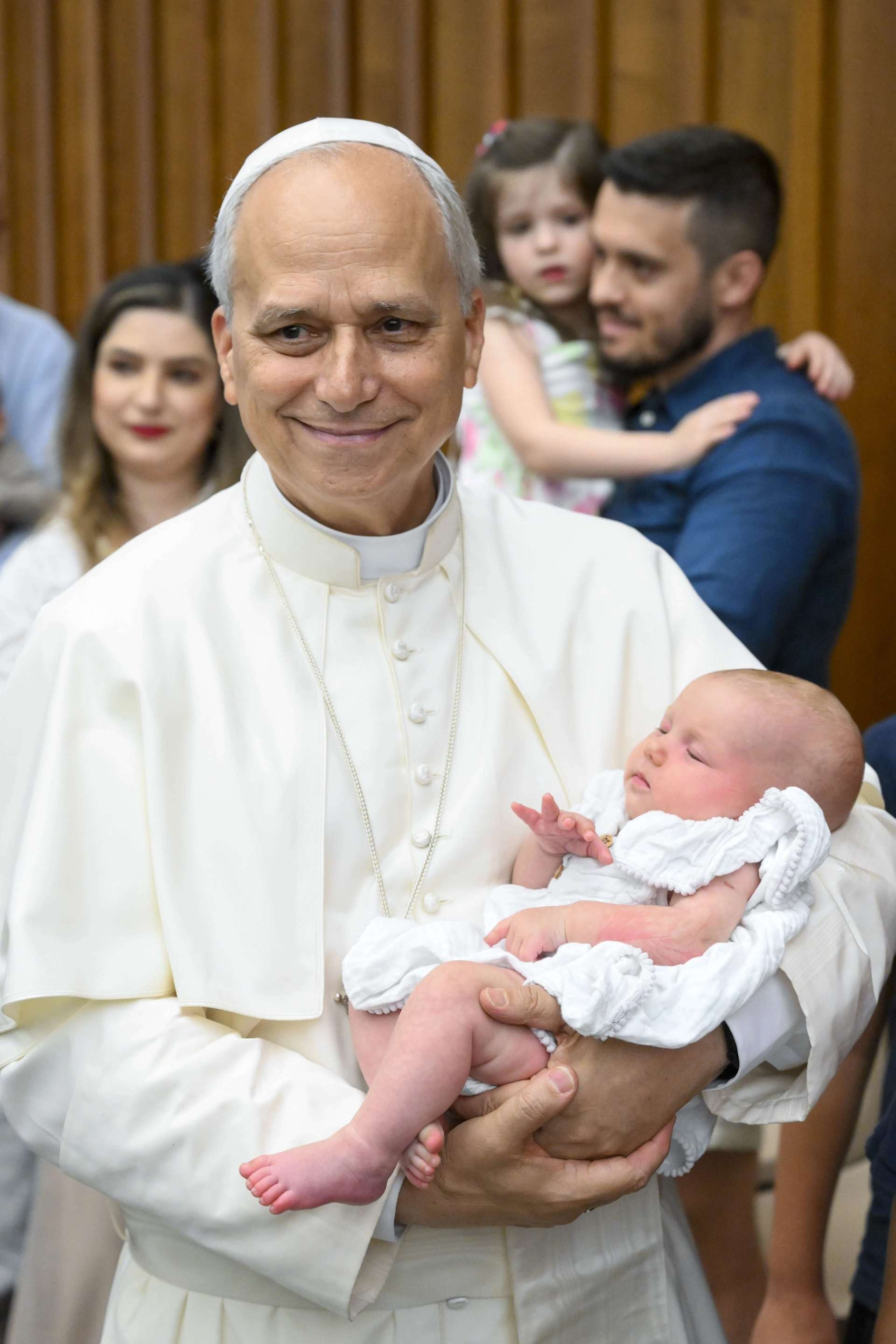
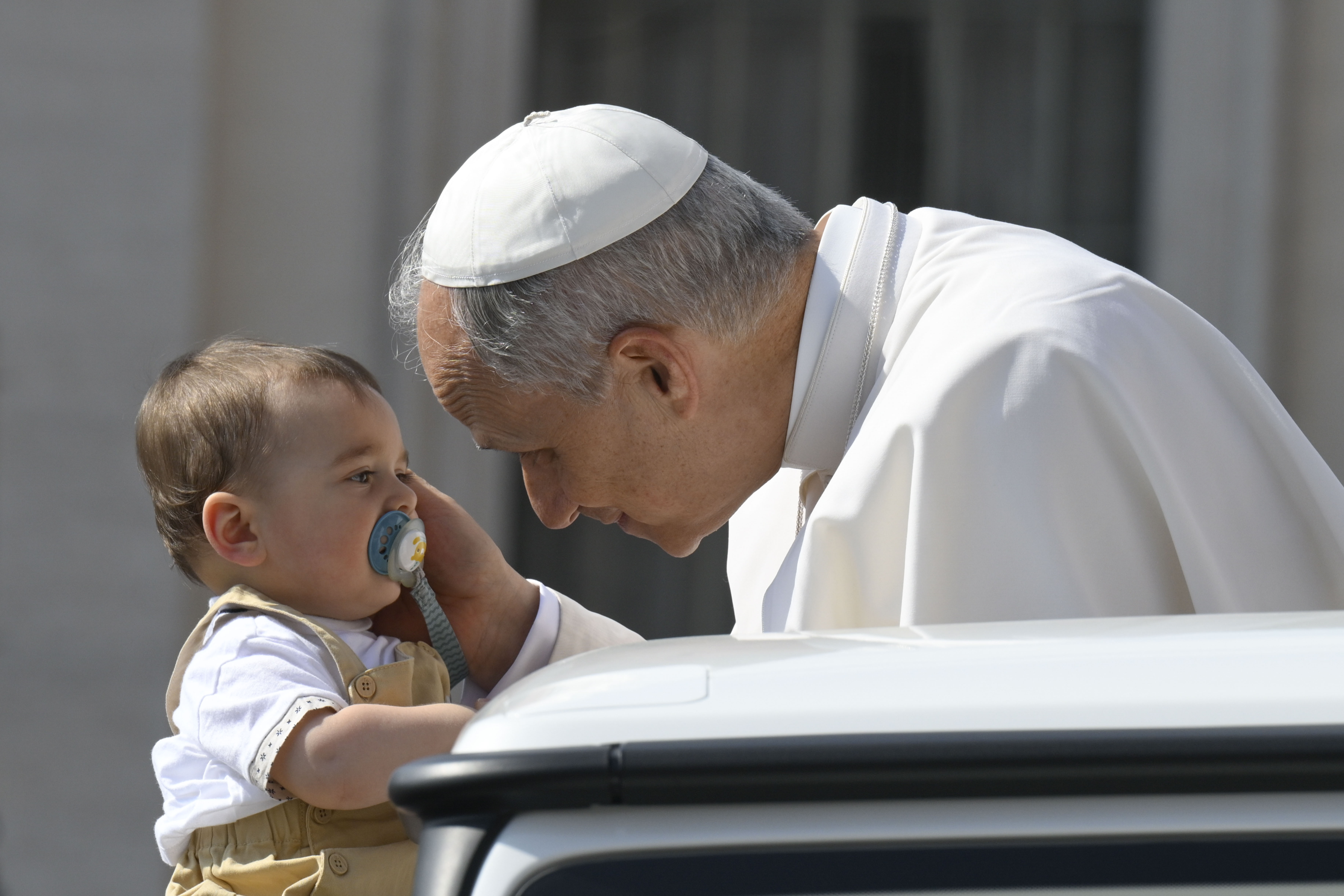
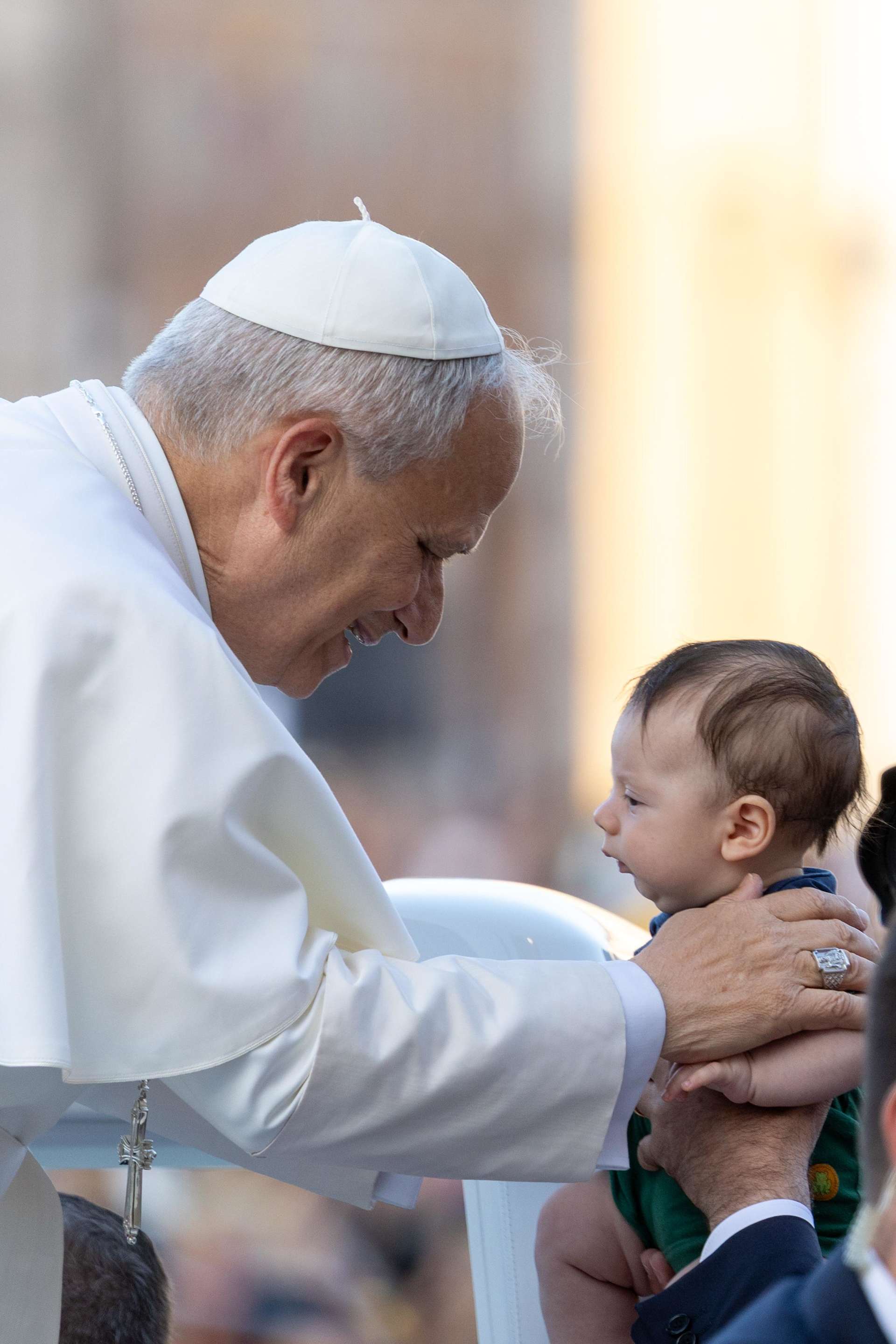
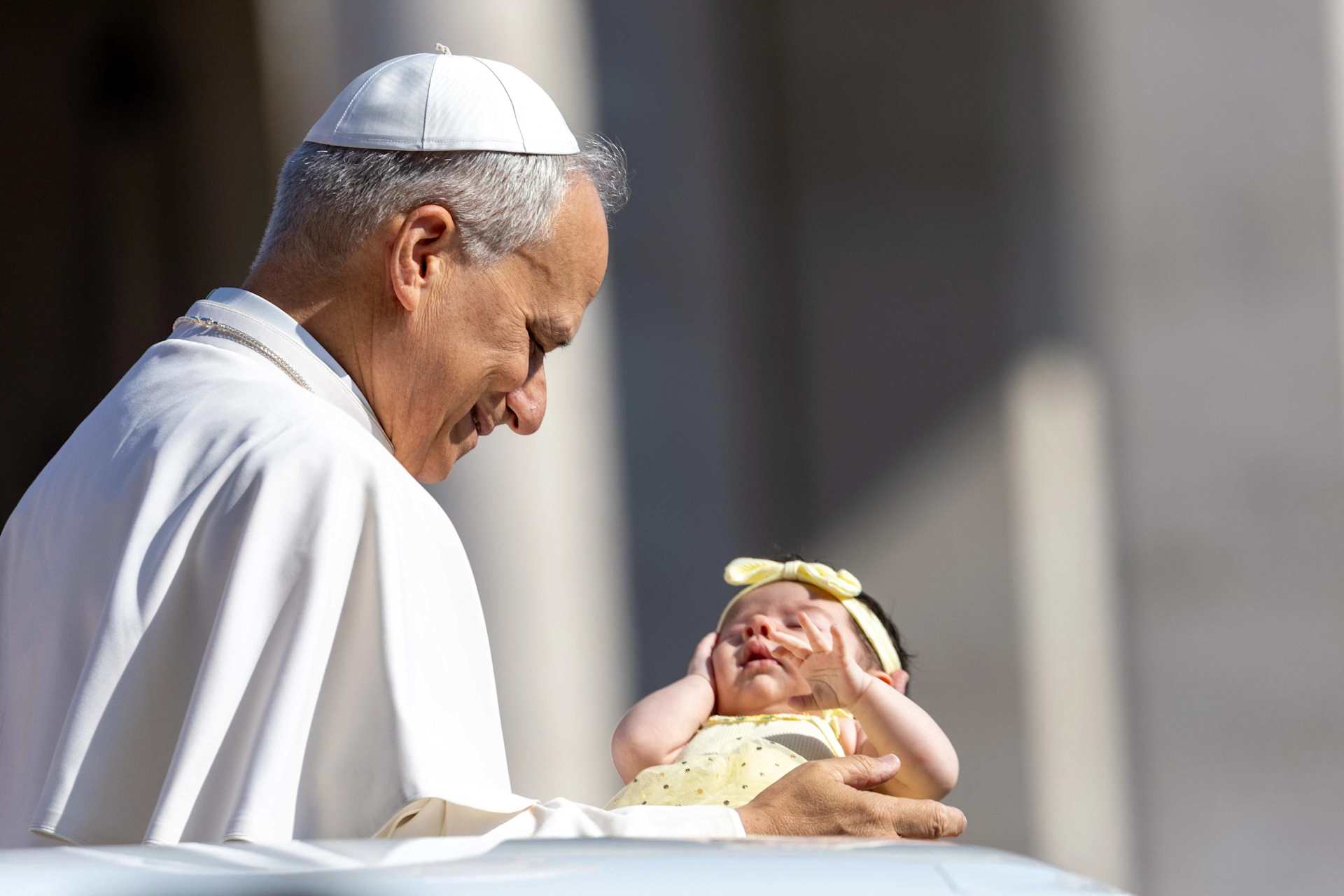
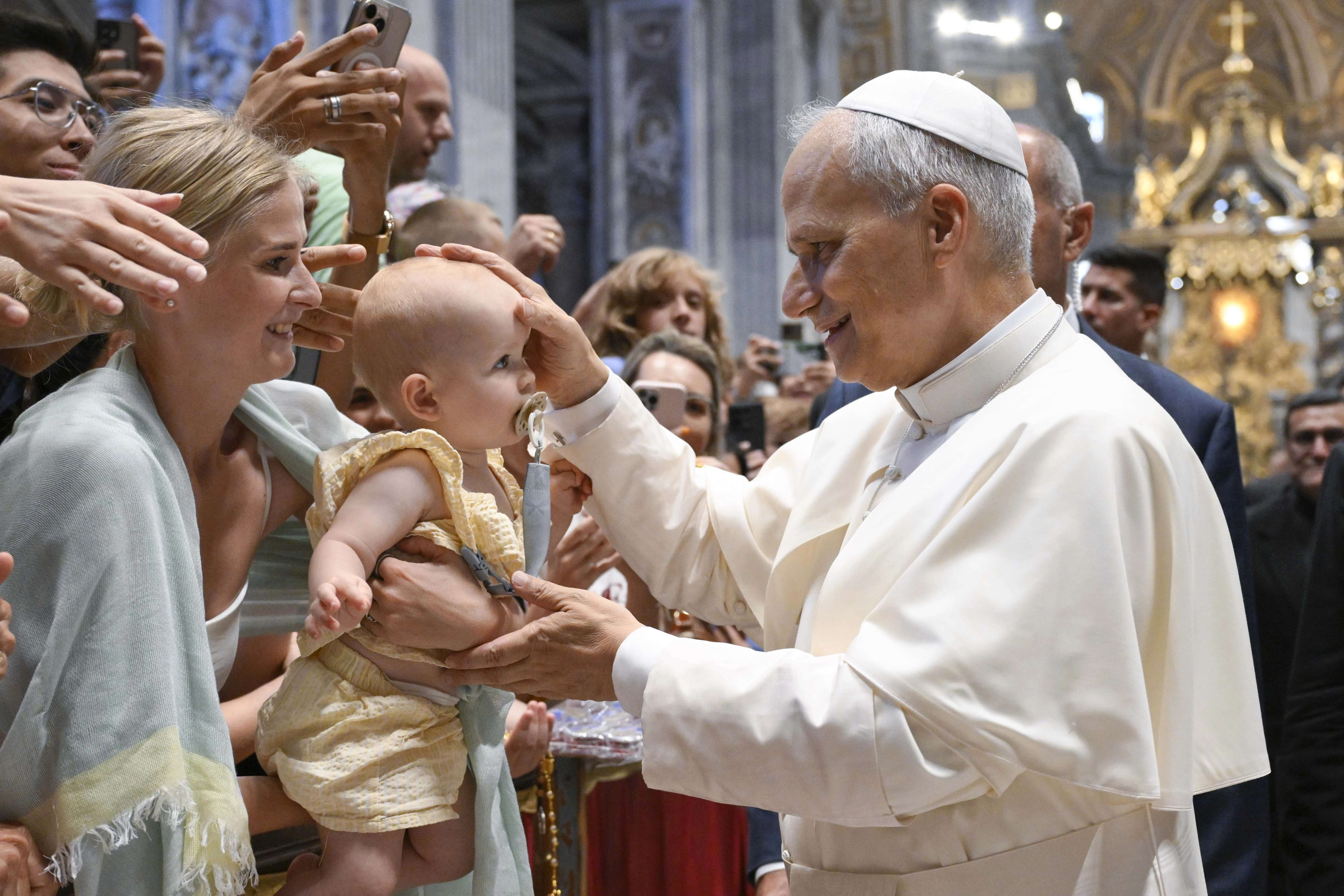
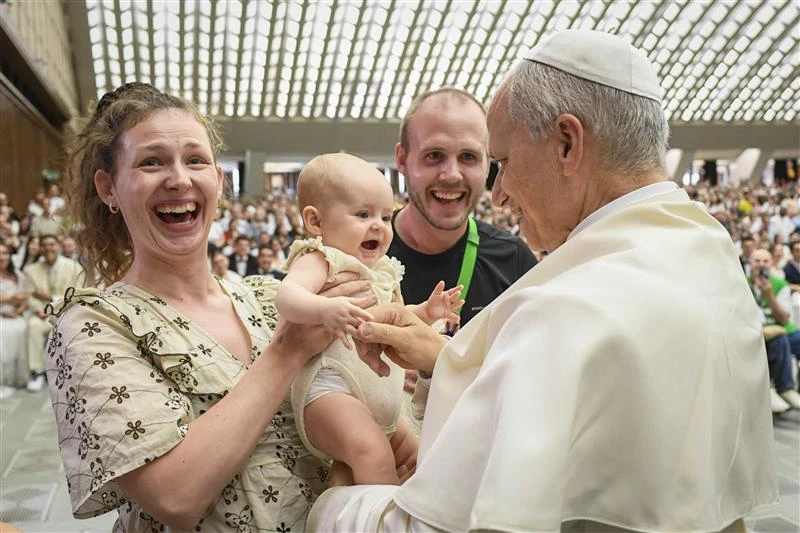
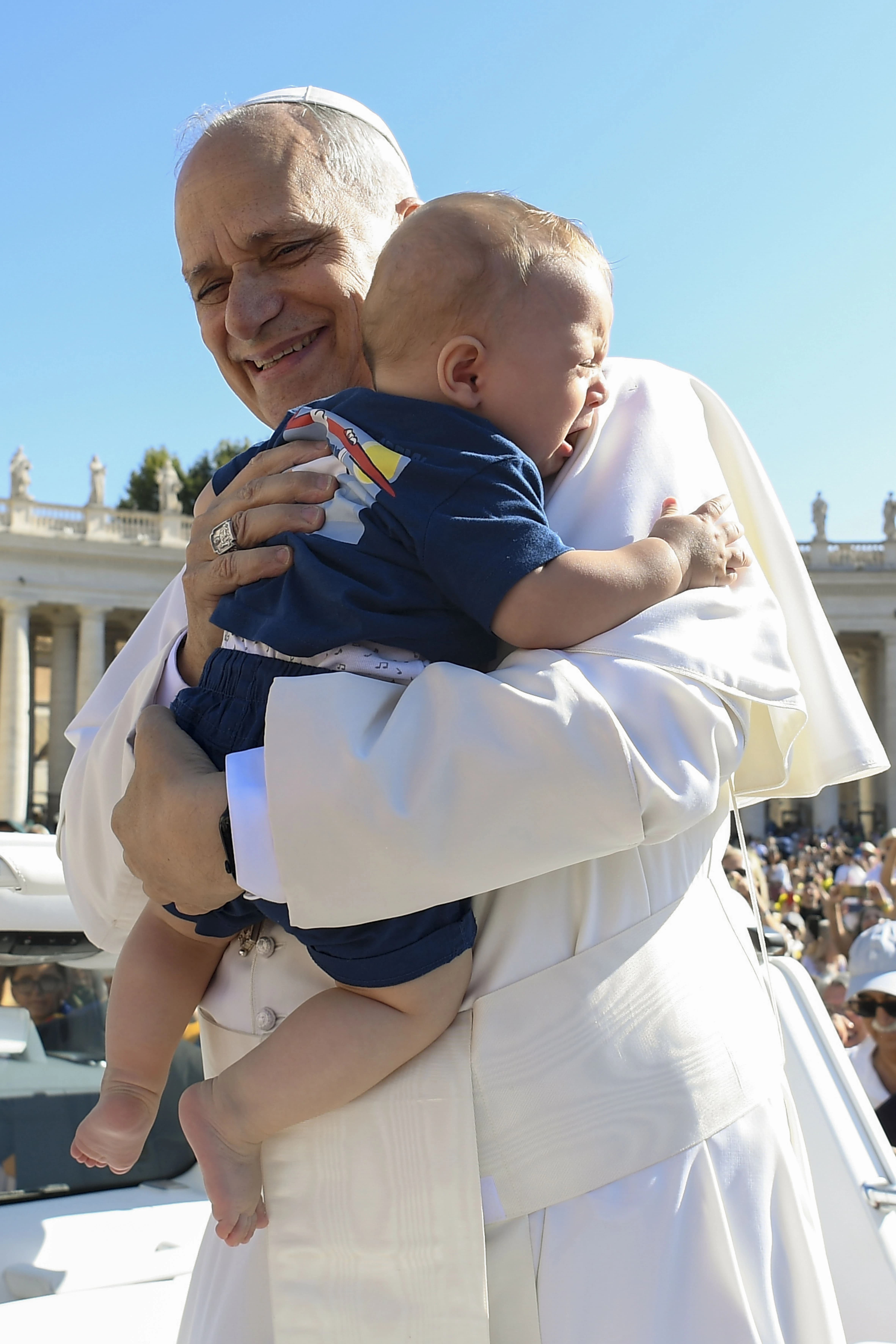
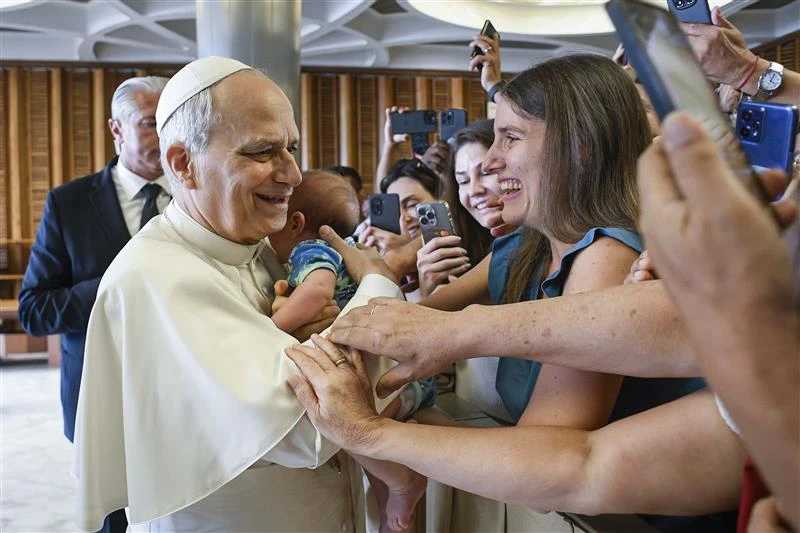

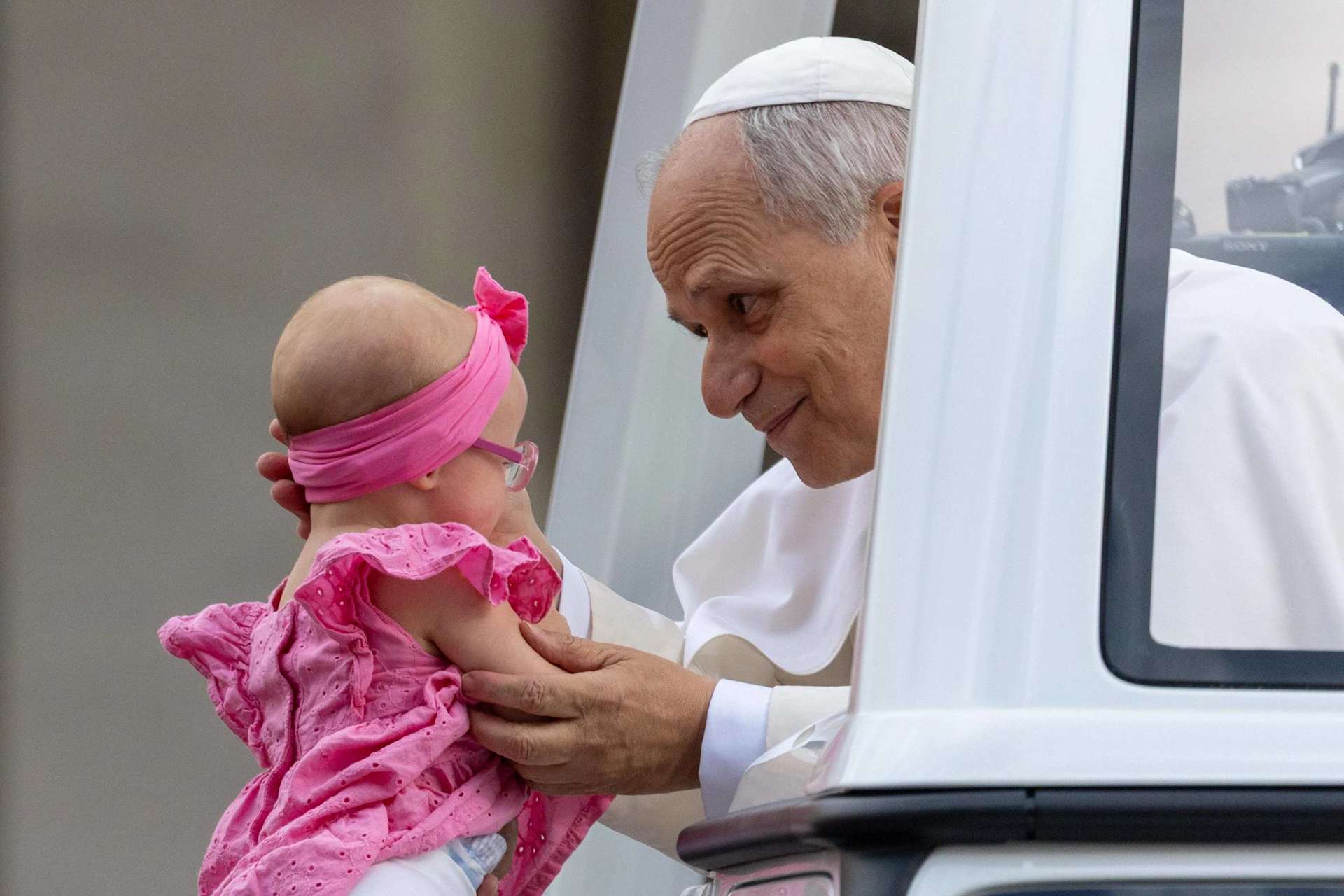
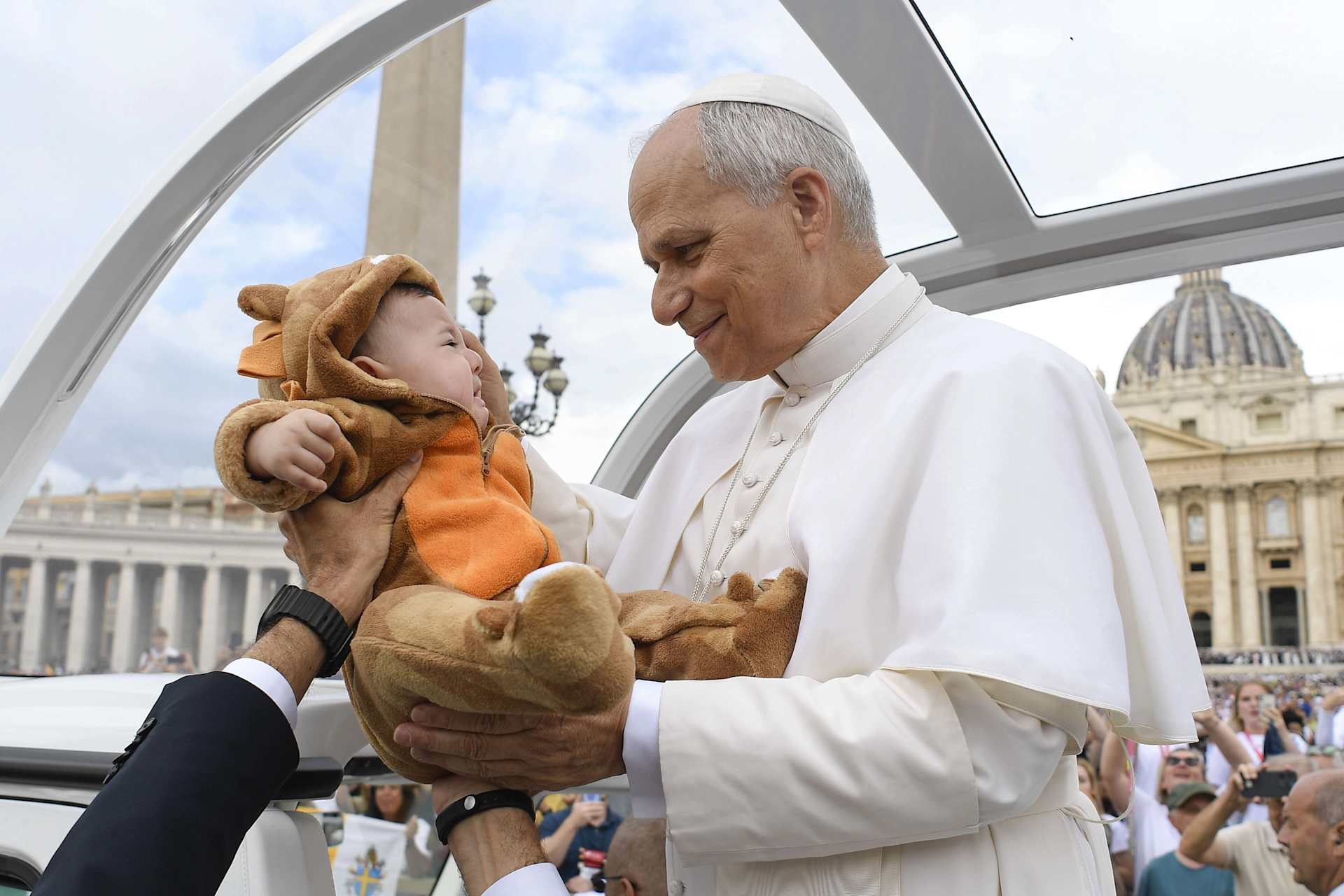
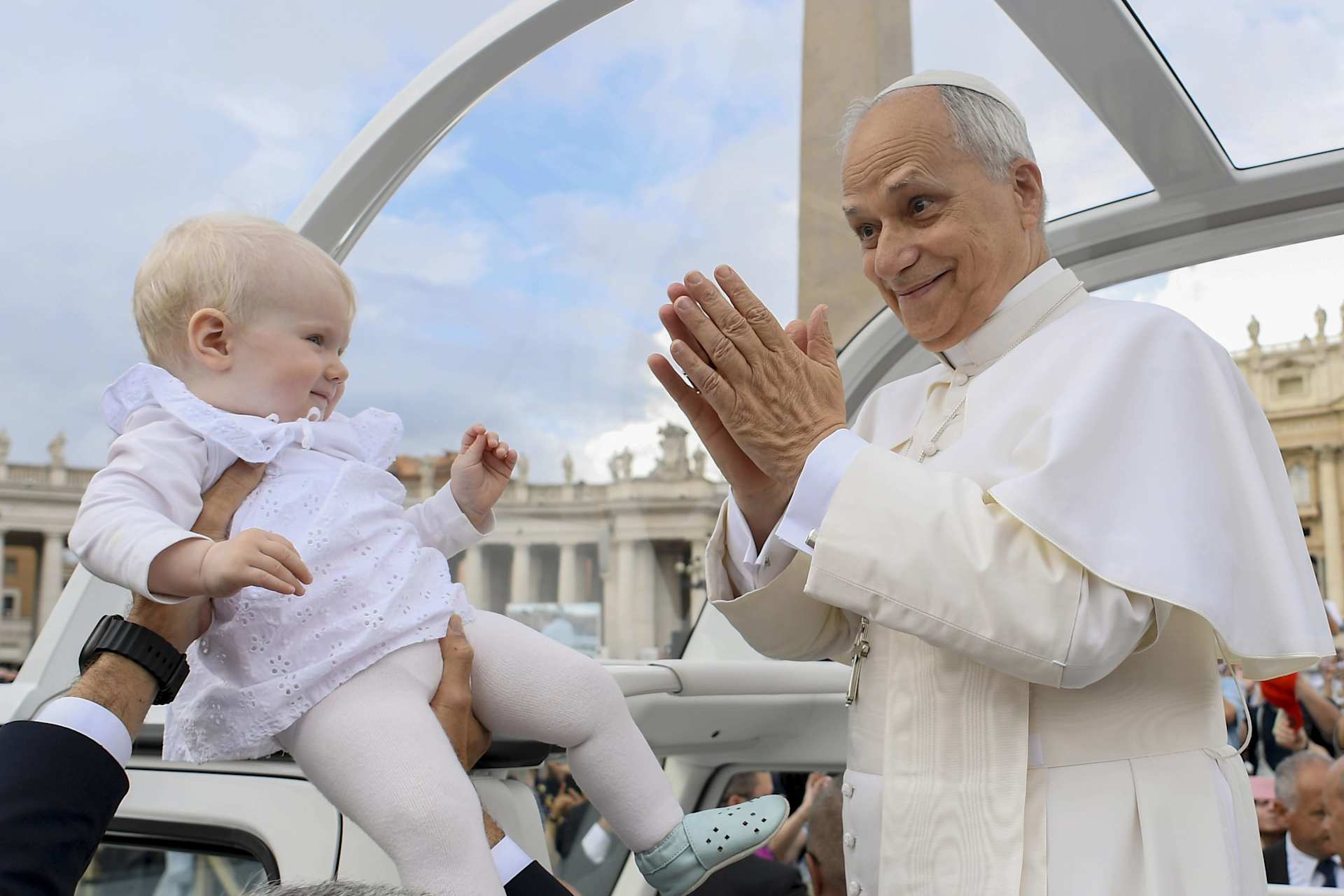
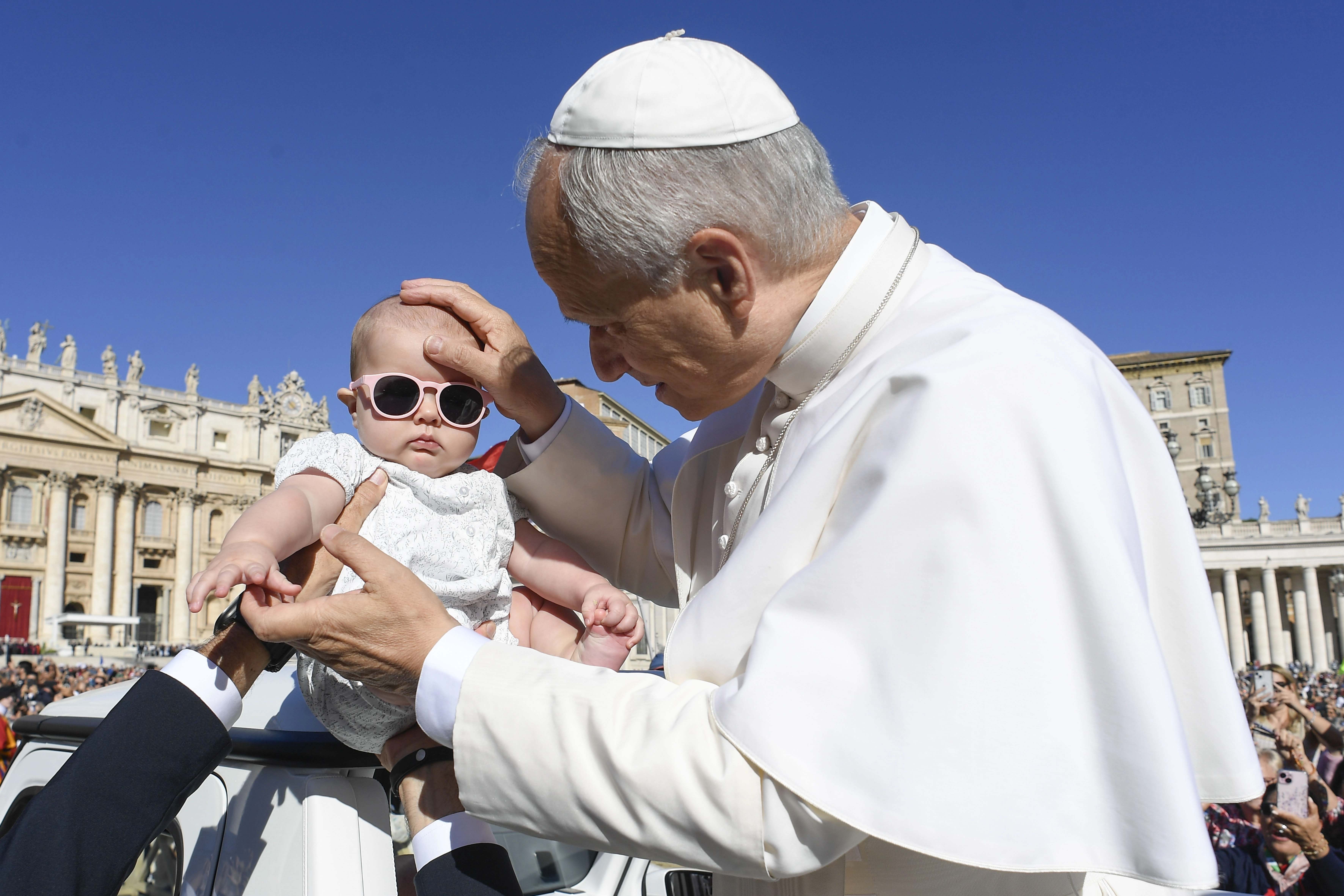
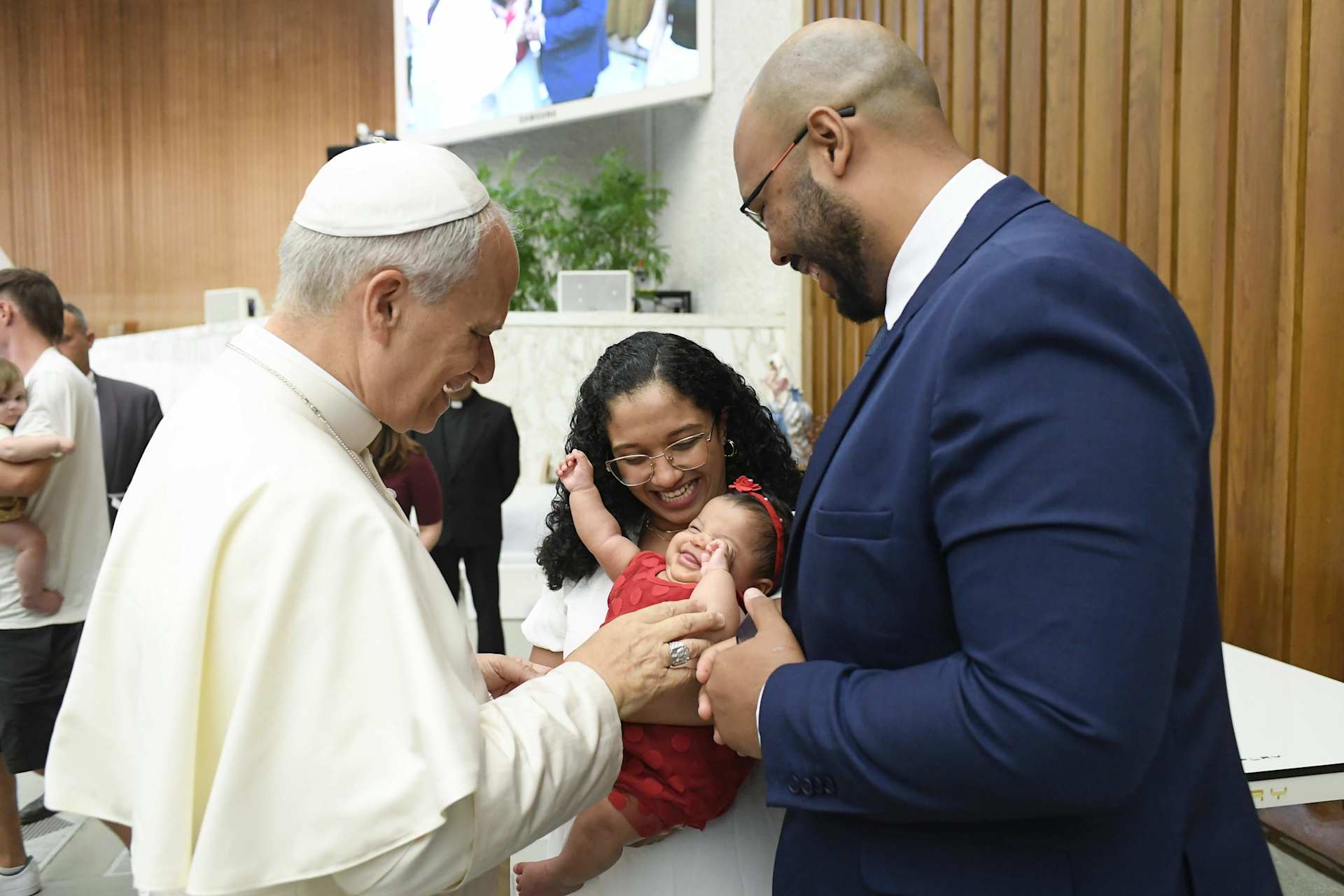
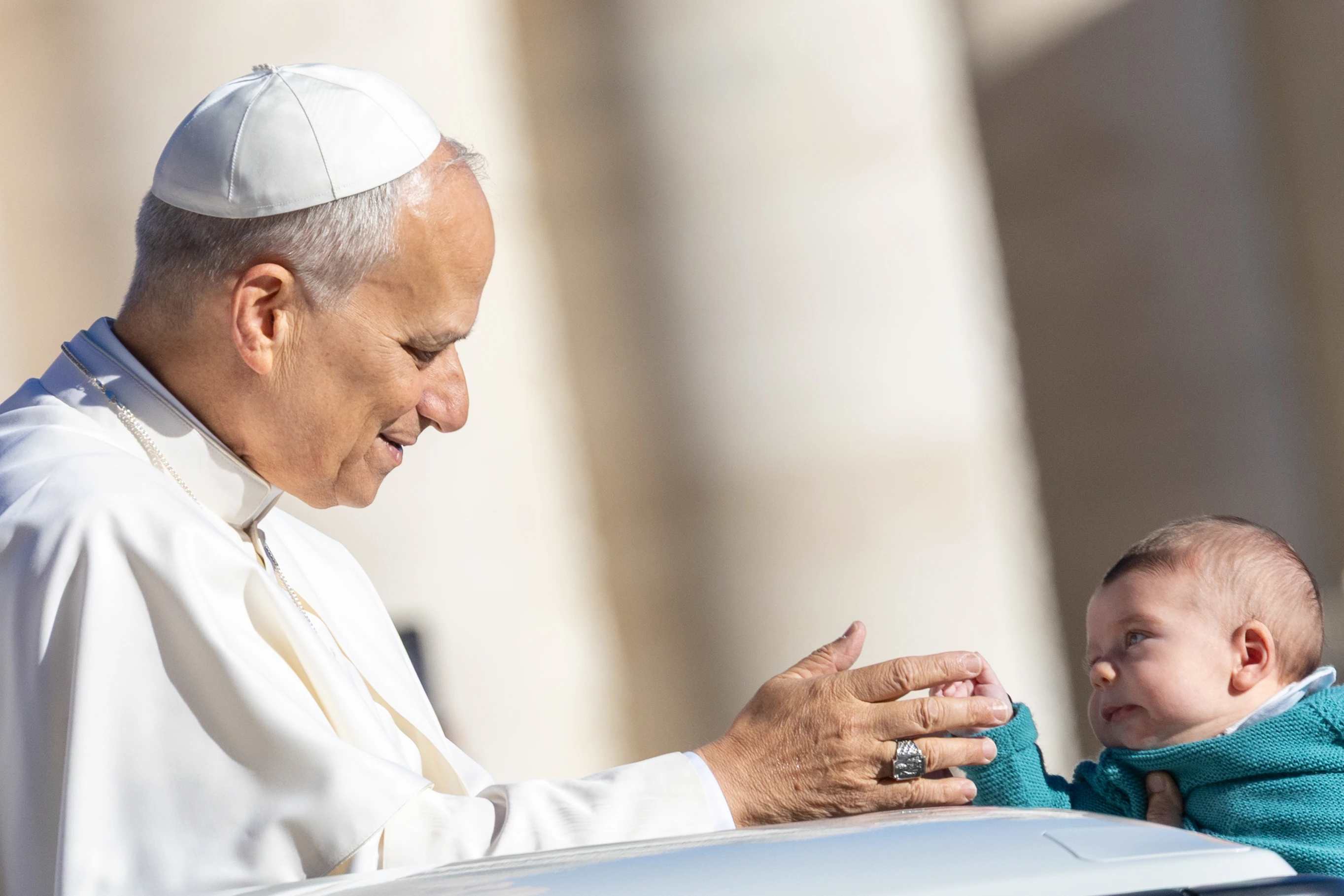
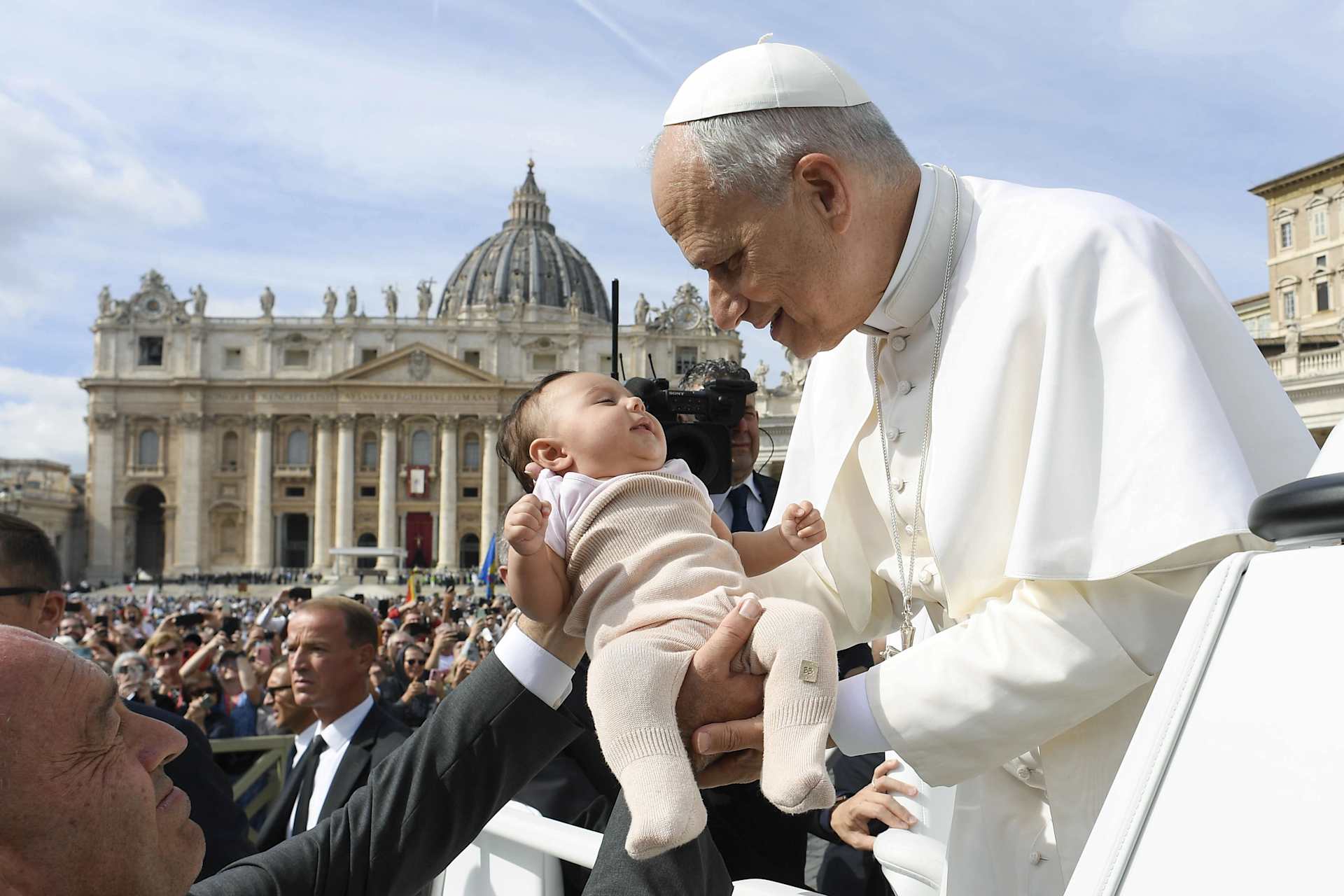
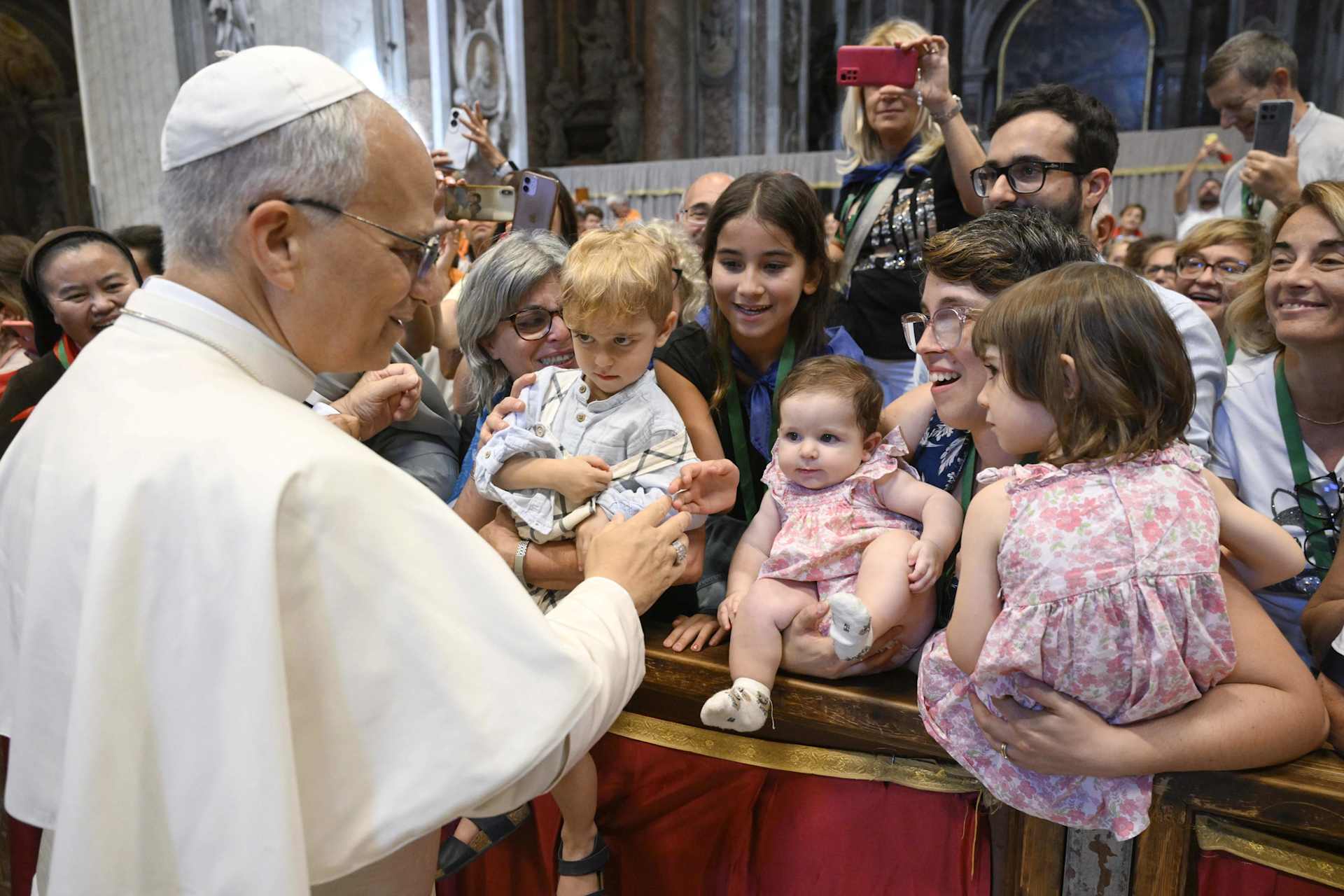
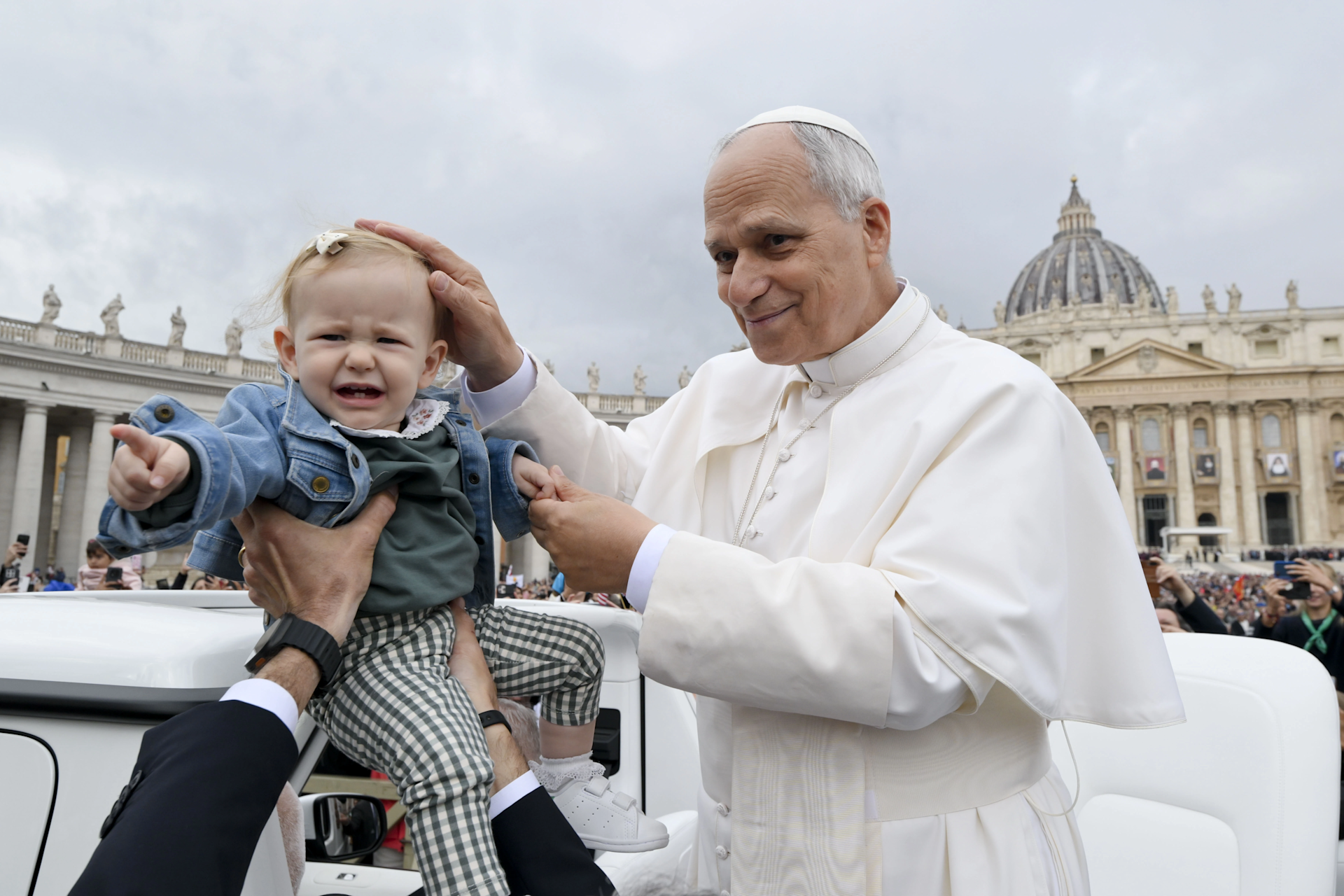
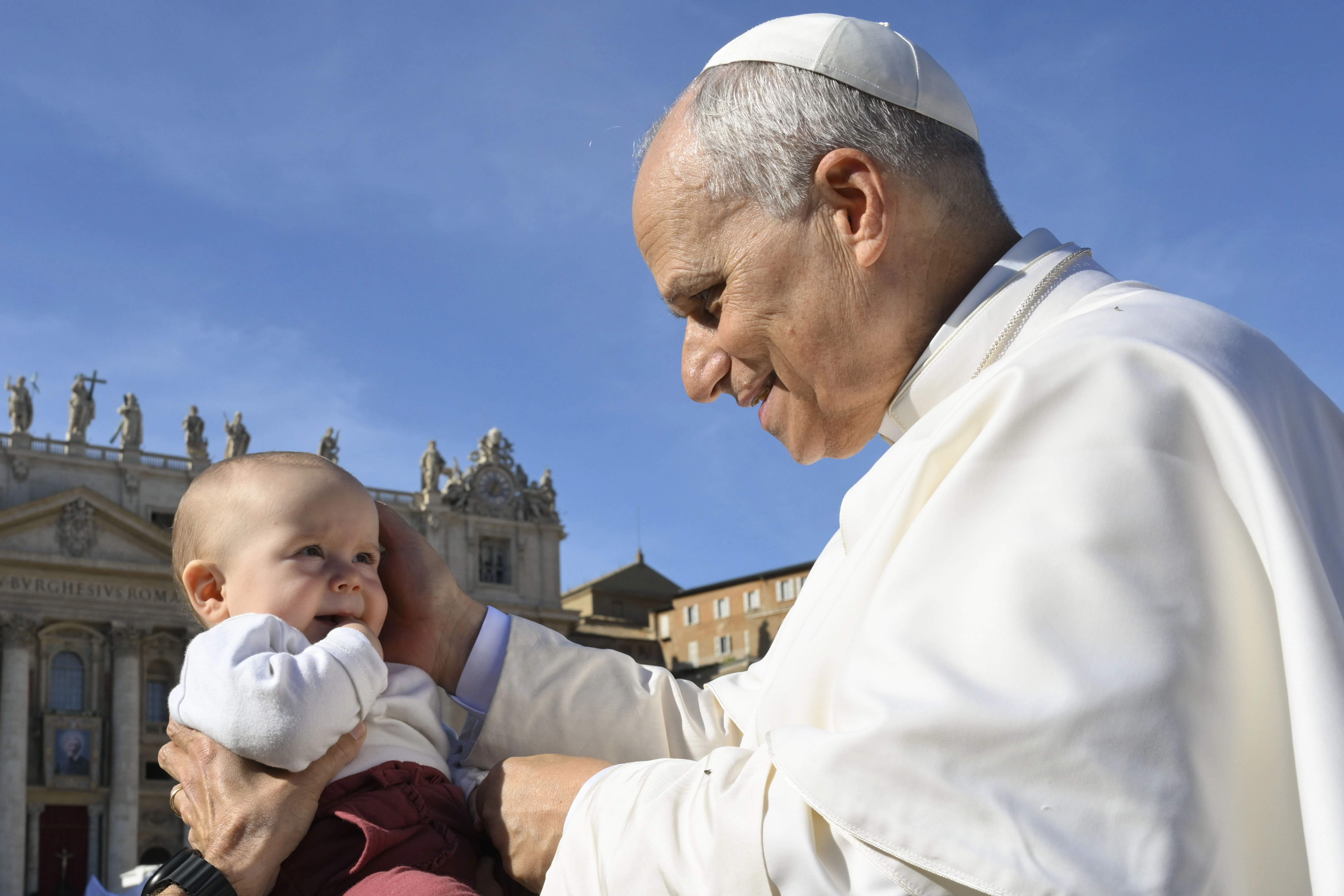
Pope at Christmas Day Mass says wars fed by falsehoods send young people to their deaths
Posted on 12/25/2025 06:35 AM (CNA Daily News)
 Pope Leo XIV celebrates Mass in St. Peter’s Basilica at the Vatican on Dec. 25, 2025. | Credit: Daniel Ibañez/EWTN News
Pope Leo XIV celebrates Mass in St. Peter’s Basilica at the Vatican on Dec. 25, 2025. | Credit: Daniel Ibañez/EWTN News
Vatican City, Dec 25, 2025 / 01:35 am (CNA).
Pope Leo XIV on Christmas Day deplored the “falsehoods” used to justify wars that leave young people “forced to take up arms” and “sent to their deaths,” while also drawing attention to the humanitarian suffering of displaced people, including families living in tents in Gaza.
In his first Christmas as pope, Leo celebrated Christmas Day Mass in St. Peter’s Basilica, reviving a practice not seen since 1994 during the pontificate of St. John Paul II. Reflecting on the prologue of St. John’s Gospel, the pope said in his homily that the Christmas liturgy highlights a striking contrast: God’s Word, which acts with power, comes into the world in utter weakness.
“The ‘Word’ is a word that acts,” Leo said. Yet, he added, “the Word of God appears but cannot speak. He comes to us as a newborn baby who can only cry and babble.”
Leo said the mystery Christians celebrate at Christmas cannot be separated from the vulnerability of those whose dignity is assaulted by war, displacement, and poverty. He urged Catholics to let Christ’s birth pierce complacency and move them toward tenderness and solidarity.
“‘Flesh’ is the radical nakedness that, in Bethlehem as on Calvary, remains even without words — just as so many brothers and sisters, stripped of their dignity and reduced to silence, have no words today,” he said.
In one of the homily’s most striking passages, Leo connected the Gospel image of the Word “pitching” his tent among humanity with the reality faced by families living in makeshift shelters amid conflict.
“Dear brothers and sisters, since the Word was made flesh, humanity now speaks, crying out with God’s own desire to encounter us. The Word has pitched his fragile tent among us,” he said, before asking: “How, then, can we not think of the tents in Gaza, exposed for weeks to rain, wind, and cold; and of those of so many other refugees and displaced persons on every continent; or of the makeshift shelters of thousands of homeless people in our own cities?”
The pope also described the toll of war in terms of both shattered communities and wounded consciences.
“Fragile is the flesh of defenseless populations, tried by so many wars, ongoing or concluded, leaving behind rubble and open wounds,” he said. “Fragile are the minds and lives of young people forced to take up arms, who on the front lines feel the senselessness of what is asked of them and the falsehoods that fill the pompous speeches of those who send them to their deaths.”
Leo framed Christmas as a proclamation that peace is not merely a hope for the future but a gift already present in Christ, even when few recognize it. Quoting Jesus’ words to the disciples, he said: “‘Peace I leave with you; my peace I give to you; not as the world gives do I give to you’ (Jn 14:27).”
That peace, he said, begins not in rhetoric but in concrete compassion that listens, stays close, and responds to suffering.
“When the fragility of others penetrates our hearts, when their pain shatters our rigid certainties, then peace has already begun,” he said. “The peace of God is born from a newborn’s cry that is welcomed, from weeping that is heard. It is born amidst ruins that call out for new forms of solidarity.”
The pope warned that believers can bury what the Gospel calls “the power to become children of God” by keeping their distance from the vulnerable.
“Becoming children of God is a true power — one that remains buried so long as we keep our distance from the cry of children and the frailty of the elderly, from the helpless silence of victims and the resigned melancholy of those who do the evil they do not want,” he said.
This story was first published by ACI Prensa, CNA’s Spanish-language news partner. It has been translated and adapted by CNA.
